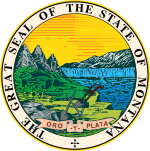
The 1978 United States Senate elections were held on November 7, in the middle of Democratic President Jimmy Carter's term. The 33 seats of Class 2 were contested in regular elections. Special elections were also held to fill vacancies.

Roy Elmer Ayers was a U.S. Democratic politician. He served as a member of the United States House of Representatives and as the 11th Governor of Montana. He was the first governor of Montana to be born in what would become the state of Montana.
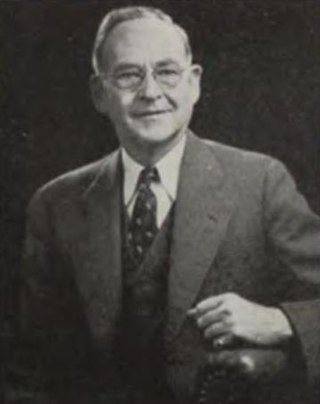
Samuel Clarence Ford was an American politician who served as the 12th Governor of Montana from 1941 to 1949.
Leif Erickson was an American attorney who served as an Associate Justice of the Montana Supreme Court from 1939 to 1945.

Four justices of the seven-member North Carolina Supreme Court and four judges of the 15-member North Carolina Court of Appeals were elected by North Carolina voters on November 4, 2014, concurrently with other state elections. Terms for seats on each court are eight years.

The 1930 United States Senate election in Montana took place on November 4, 1930. Incumbent United States Senator Thomas J. Walsh, who was first elected to the Senate in 1912, and re-elected in 1918 and 1924, ran for re-election. He won the Democratic primary unopposed, and faced Montana Supreme Court Associate Justice Albert J. Galen, the Republican nominee, and several independent opponents in the general election. Ultimately, Walsh defeated his opponents in a landslide and won his fourth and final term in the Senate.
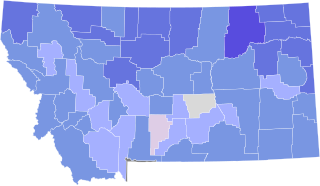
The 1930 United States Senate election in Montana took place on November 3, 1936. Incumbent United States Senator James E. Murray, who was first elected to the Senate in a special election in 1934, ran for re-election. He narrowly emerged from a competitive and close Democratic primary, wherein he was challenged by United States Congressman Joseph P. Monaghan, who represented Montana's 1st congressional district. In the general election, Murray was opposed by Thomas O. Larson, a State Senator and the Republican nominee, and Monaghan, who, after losing the primary, ran as an independent candidate. Murray ended up winning a second term, and his first full term, in a landslide, defeating both of his opponents by a comfortable margin.

The 1946 United States Senate election in Montana took place on November 5, 1946. Incumbent United States Senator Burton K. Wheeler, who was first elected to the Senate in 1922, and was re-elected in 1928, 1934, and 1940, ran for re-election. He was challenged in the Democratic primary by Leif Erickson, the Chief Justice of the Montana Supreme Court, and, following a close election, was narrowly defeated by Erickson. In the general election, Erickson faced State Senator Zales Ecton, the Republican nominee. Ultimately, Ecton defeated Erickson by a fairly wide margin, winning his first and only term in the Senate. Another Republican would not be elected Senator from Montana until 42 years later, when Conrad Burns narrowly won the 1988 election.

The 1992 Montana gubernatorial election took place on November 3, 1992. Incumbent Governor of Montana Stan Stephens, who was first elected in 1988, declined to seek re-election. Marc Racicot, the Attorney General of Montana, won the Republican primary and advanced to the general election, where he faced State Representative Dorothy Bradley, who had emerged from a crowded Democratic primary as the nominee of her party. A close election ensued, but in the end, Racicot ended up defeating Bradley to win his first of two terms as governor. While on the same ballot, Democrat presidential candidate Bill Clinton won the state of Montana, and eventually won the 1992 United States presidential election.
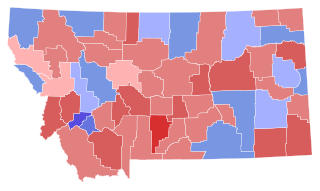
The 1988 Montana gubernatorial election took place on November 8, 1988. Incumbent Governor of Montana Ted Schwinden, who was first elected in 1980 and was re-elected in 1984, declined to seek re-election to a third term, creating an open seat. Stan Stephens, the former president of the Montana Senate, won a close Republican primary, and advanced to the general election, where he was opposed by Thomas Lee Judge, Schwinden's predecessor as governor and the Democratic nominee. Though the general election was hotly contested, Stephens ultimately defeated Judge, becoming the first Republican to win a gubernatorial election in Montana since 1964.
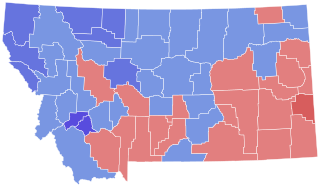
The 1948 Montana gubernatorial election took place on November 2, 1948. Incumbent Governor of Montana Sam C. Ford, who was first elected Governor in 1940 and was re-elected in 1944, ran for re-election. He won the Republican primary and advanced to the general election, where he faced John W. Bonner, the former Attorney General of Montana and the Democratic nominee. Ultimately, Bonner defeated Ford handily in his bid for re-election, winning his first and only term as governor.

The 1940 Montana gubernatorial election took place on November 5, 1940. Incumbent Governor of Montana Roy E. Ayers, who was first elected governor in 1936, ran for re-election. He narrowly won the Democratic primary by just over a thousand votes to win renomination, and advanced to the general election, where he was opposed by Sam C. Ford, a former Associate Justice of the Montana Supreme Court and the Republican nominee. Ultimately, in spite of the fact that then-President Franklin D. Roosevelt comfortably won the state in that year's presidential election, Ford narrowly defeated Ayers to win his first of two terms as governor.

The 1928 Montana gubernatorial election took place on November 6, 1928. Incumbent Governor of Montana John E. Erickson, who was first elected governor in 1924, ran for re-election. Erickson only narrowly won the Democratic primary against future Governor Roy E. Ayers, and advanced to the general election, where he was opposed by U.S. Attorney Wellington D. Rankin, the former Attorney General of Montana. Although Herbert Hoover carried the state in a landslide in the presidential election that year, Erickson won re-election to his second term as governor in a landslide over Rankin.

The 1924 Montana gubernatorial election took place on November 4, 1924. Incumbent Governor of Montana Joseph M. Dixon, who was first elected governor in 1920, ran for re-election. Dixon won a competitive Republican primary, and moved on to the general election, where he faced John E. Erickson, a former district court judge and the Democratic nominee; and Frank J. Edwards, the 1916 Republican nominee for governor and the Farmer–Labor Party nominee. Ultimately, Erickson managed to defeat Dixon in his bid for re-election, winning what would be the first of three terms as governor.
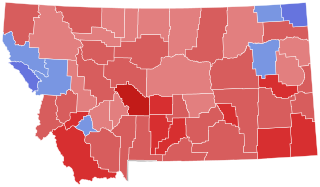
The 1920 Montana gubernatorial election took place on November 2, 1920. Incumbent Governor of Montana Sam V. Stewart, who was first elected Governor in 1912 and 1916, declined to run for re-election. To replace him, former United States Senator Joseph M. Dixon won the Republican primary, which was closely contested. In the general election, he faced Burton K. Wheeler, the former United States Attorney for the District of Montana and the Democratic nominee. Ultimately, Dixon defeated Wheeler by a wide margin to win his first and only term as governor.

United States gubernatorial elections were held on November 3, 2020, in 11 states and two territories. The previous gubernatorial elections for this group of states took place in 2016, except in New Hampshire and Vermont where governors only serve two-year terms. These two states elected their current governors in 2018. Nine state governors ran for reelection and all nine won, while Democrat Steve Bullock of Montana could not run again due to term limits and Republican Gary Herbert of Utah decided to retire at the end of his term.
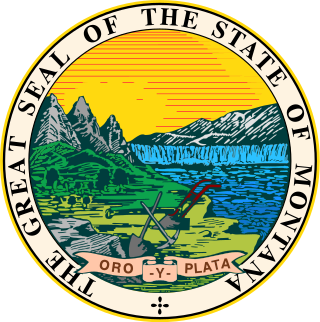
A general election in the state of Montana was held on Tuesday, November 3, 2020, with the primary elections being held on June 2, 2020. Voters will elect one member to United States House of Representatives and all five state constitutional offices, among other elected offices.

West Virginia held elections on November 3, 2020. The Democratic and Republican party primary elections were held on June 9, 2020. The 2020 elections marked a turning point history as West Virginia's rightward shift was further signified: Republicans won all U.S. House seats, statewide executive offices & the U.S. Senate seat up for election while also expanding their majorities in both state legislative chambers, & President Trump won every county in the state and 68.62% of the statewide vote in his re-election bid, for a statewide margin of 38.93%.

The 2022 United States attorney general elections were held on November 8, 2022, to elect the attorneys general in thirty states, two territories, and one federal district. The previous elections for this group of states took place in 2018. The attorney general of Vermont serves two-year terms and was last elected in 2020.

The 2022 Ohio general elections took place on November 8, 2022, throughout the US state of Ohio.

